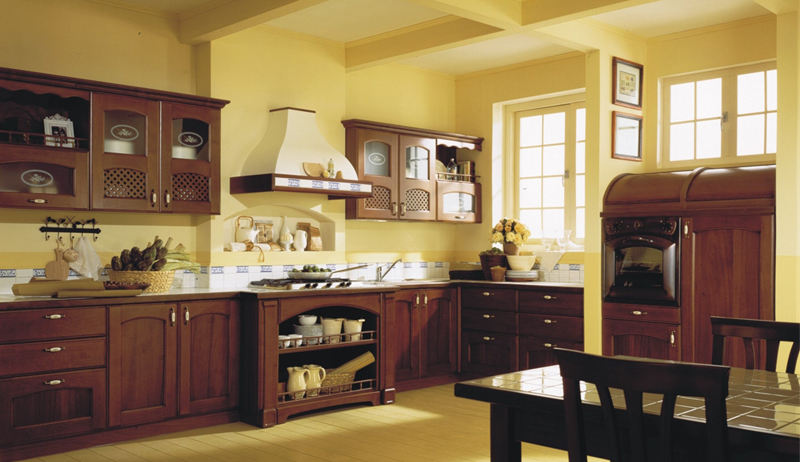Traditional Cookware: Proven Techniques for Delectable Recipes

In a realm ruled by contemporary amenities and nonstick innovations, traditional cookware remains to hold its ground as a mainstay in cooking spaces around the world. It is more than a fad; it is a time-honored heritage that has been transmitted through generations. From the rich aroma of a skillet sizzling with fresh produce to the gleam of a well-seasoned Dutch oven, classic cookware brings both functionality and a sense of nostalgia to cooking. https://www.atmohomeware.com.au/ and amateur chefs alike argue that employing these timeless tools not just boosts the flavors of meals but also connects them to the cooking traditions that molded their passion for the culinary arts.
As we explore into the realm of traditional cookware, we will explore its undeniable appeal, the essential items that all kitchen should possess, and the techniques that make these age-old tools timeless. Whether you are experienced chef or an aspiring cook, understanding why classic cookware stays essential will inspire you to embrace the past while creating delicious meals for the present. From the craft of correct seasoning to the beauty of classic styles, this exploration will enhance your appreciation for the lasting appeal of traditional cookware and the functions they serve in kitchens both modern and classic.
Timeless Appeal of Traditional Cookware
Traditional cookware possesses a allure that surpasses generations, making it a essential in kitchens around the planet. Regardless of whether it’s the rustically appealing cast iron skillet or the refined elegance of an enameled Dutch oven, these tools are not just useful but also evoke a sense of sentimentality. The materials used in heritage cookware, such as cast iron, copper, and carbon steel, have been valued for centuries due to their remarkable heat retention and transfer properties. This uniformity in cooking results in meals that are laden with flavor and texture, allowing home cooks to recreate traditional dishes with simplicity.
Additionally, the visual appeal of heritage cookware cannot be underestimated. Vintage pieces often come with a charm that modern substitutes lack, from individual patinas on well-used cast iron to the warm shine of polished copper. Displaying these pieces in the kitchen can enhance the overall decor and ignite a passion for culinary arts. Their enduring design not only fulfills a functional purpose but also acts as a point of discussion, bridging people to the cooking history behind each piece.
Lastly, traditional cookware has proven its worth in today’s fast-paced world, where durability and eco-friendliness are increasingly important. Many contemporary nonstick choices struggle with longevity and eco-friendliness, leading home chefs to reevaluate their choices. Heritage cookware, when cared for properly, can last a lifetime or even be passed down through generations, making it a more sustainable choice. The purchase in these classic tools is not just about culinary performance; it’s about possessing a piece of heritage that enhances the cooking experience while contributing to a more thoughtful approach to kitchenware.

Important Cooking Equipment Components for All Culinarian
Every cook demands a reliable set of cookware to create delicious meals, and classic pieces stand the trial of time due to their toughness and adaptability. One vital item is a cast-iron skillet, prized for its power to hold heat and create a natural nonstick surface with appropriate seasoning. This cooking essential is ideal for frying, pan-searing, cooking in the oven, and even cooking slowly, making it a true staple in any cooking repertoire.
Another, must-have is an enamel-coated Dutch oven, renowned for its outstanding heat distribution and retention. It's perfect for stewing, cooking, and baking. The sturdy construction allows for stovetop and oven use, while the bright colors bring a splash of style to your kitchen. This tool not only boosts flavor through even cooking but also looks gracefully from stove to table.
In conclusion, each chef should put money in a high-quality stainless steel saucepan. Renowned for its strength and tolerance to rust and staining, stainless steel is perfect for preparing sauces, boiling grains, and cooking vegetables. With a well-built base for even heating, a quality saucepan will endure for generations when looked after properly, rendering it an indispensable addition to the classic cookware collection.
Caring for and Renewing Family Cooking Gear
To ensure the longevity of heirloom cookware, suitable care is important. Start by washing your cookware with warm soapy water, using a soft sponge to avoid damaging the surface. For cast iron, avoid immersing, as this can lead to rust. After washing, dry your cookware completely to avoid moisture accumulation. Occasionally, a light coating of oil assists maintain its seasoned layer, making sure that it provides optimal results for many years to come.
When reviving vintage cookware, begin by assessing its condition. For items with extensive rust or accumulation, a careful approach is necessary. Use a rust eraser or abrasive pad to remove rust gently, followed by a thorough wash. After decomposition, re-season the cookware to restore it back to life. Heating the pot and applying a light layer of vegetable oil will form that desirable non-stick surface while protecting it from subsequent corrosion.
Moreover, don't neglect the sentimental value of heirloom pieces. Many cookware pieces come with stories that enhance the cooking experience. Sharing the history with family or friends while using the cookware can create lasting impressions. Regardless of whether you are passing down a cherished skillet or using your grandmother's Dutch oven, show appreciation for these tools that hold tradition and craftsmanship into your modern kitchen.
